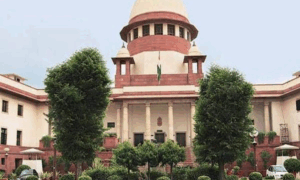
File Picture
In terms of the North East Areas Reorganization Act 1971 under which Manipur was granted full statehood, the composition of its 60 member Legislative assembly – 40 constituencies in the Imphal valley and 10 each from Naga and Kuki inhabited hills shows clearly that a disproportionately large number of seats was allowed to the valley – 60% to give the largely Meitei inhabited valley a dominant position in the state regardless of the fact that the population of the valley was a little over half – 52-53% of State population currently estimated at about 35 lakhs or so as compared to the 2011 Census figure of 2855794.
Since there was no census in 2021, the population estimates of the valley as well as the Hills are open to question which leaves scope for making allegations that illegal migration from Mayanmar has been changing the demographics of the Hill areas; and especially the Kuki areas bordering Myanmar inhabited by the Chins – the ethnic kins of Kukis speaking the same Zo language as the Mizos of Mizoram.
*The Meitei demand for sealing the border with Myanmar and preparation of a National Register of Citizens (NRC) even after the Government of India extended the Inner Line Permit system to Manipur in 2019 may be seen as expression of their concern of demographic changes which might entail a delimitation of state assembly constituencies in some future date threatening their dominant position of Meiteis in Manipur; and as if to counter it, the inclusion of Meiteis in the List of Scheduled Tribes as recommended in the order of Justice Murlidharan of the Imphal bench of the Guwahati High court found wide support in the valley and predictably huge opposition in the Hills.
This is the core issue of Manipur crisis today.
[the_ad id=”55723″]


















